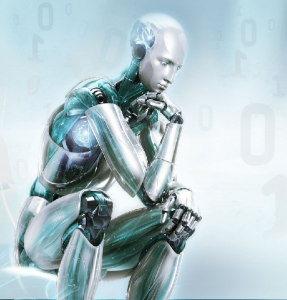Everything about Web and Network Monitoring
by Jeffrey Walker | Feb 17, 2014
 Fascinating parallels have been drawn between the Industrial Revolution and the technological impacts of 3-D printing. Fueled by the internet and spawned by the growth of open source, cloud, and collaboration technologies, 3-D printing has significant potential to serve as a new type of innovation that generates jobs, transforms industries, and changes society in ways never imagined. As one writer has well stated, “In the new era, everyone can potentially be their own manufacturer as well as their own internet site and power company.” Let’s take a closer look at this fascinating new technology to see why it has huge implications for businesses today.
Fascinating parallels have been drawn between the Industrial Revolution and the technological impacts of 3-D printing. Fueled by the internet and spawned by the growth of open source, cloud, and collaboration technologies, 3-D printing has significant potential to serve as a new type of innovation that generates jobs, transforms industries, and changes society in ways never imagined. As one writer has well stated, “In the new era, everyone can potentially be their own manufacturer as well as their own internet site and power company.” Let’s take a closer look at this fascinating new technology to see why it has huge implications for businesses today.

What is 3-D Printing?
In many ways a 3-D printer is like a small industrial robot. The platform consists of both a 3-D scanner and a printer. 3-D scanning is a process that uses the latest advances in holography and tomography to analyze and scan a real object to collect data on its shape and appearance in order to produce a CAD model. The process of 3-D printing is also known as “Additive manufacturing” because it involves an additive process in which successive layers of materials, such as plastic, wood, or metal are laid down through sequential layering to reproduce a 3 dimensional replica of the originally scanned object. In order to perform the print, the 3-D printer reads the CAD file and converts it usually into a STL (stereolithography) file format.
Once the 3-D printer reads the STL file it proceeds to set down successive layers of liquid, powder, paper or sheet material to build the model from a series of cross sections, which correspond to the CAD design. Through a repeated process of sequential printing, these layers of liquid, powder, or paper are then joined together to create the desired geometric shape from the original design.

The most common technique of 3-D printing is called Fused Deposition Modeling (FDM). In this process the base material such as plastic is fed into an extrusion nozzle, which then melts the plastic and extrudes it onto a base, or platform. The nozzle and base are computer regulated so that the digital model is translated into X, Y and Z coordinates for the nozzle and base to follow during printing. Through this process the digital model is transformed into a real plastic replica.

Why 3-D Printing Matters?
The implications of being able to reproduce a digital scanned object into a physical object are profound from a business and economic standpoint. Since the Industrial Revolution, manufacturing has been synonymous with large expensive factories, machine tools, production lines, and economies of scale that all contribute to the mass production of goods and services. Because of enormous costs, in more recent decades, many manufacturing jobs and practices in the United States for instance have been outsourced oversees to places like China.
But imagine what a 3-D printing manufacturing ecosystem of the future might look like. One model suggests a “decentralized network of local hubs” that would allow companies to rapidly prototype different brands and services based on consumer feedback specific to certain geographies; imagine a local 3-D printing hub in Boston for Nike shoes or Jensport backpacks.
The overall effect and benefits of 3-D printing are significant: lower cost of the technology, lower waste, faster turnaround, and less reliance on outsourcing. As 3-D printing technology becomes more accessible the cost to entry form small business to small-scale production manufacturing will become minimal.
Who are the Major Players in this Market?
Some of the major players in 3-D printing market that you’ll want to familiarize yourself with are:
3D Systems: The biggest and arguably the best known of 3-D printing manufacturers, fueled by an agreement with Google’s Motorola division to manufacture smartphone parts.
Stratasys: Boasts largest scale in terms of printers installed; saw 2013 sales growth of 125% and last June purchased well known vendor, MakerBot.
ExOne: Focuses more on enterprise level 3-D printing like prototypes and production parts such as for automobiles and the aerospace industry.
So we’ve started to cover the landscape of the exciting world of 3-D printing. In part 3 of this series we’ll take a closer look at the future implications of 3-D printing on the manufacturing, commerce, and retail industries – all points that should be of interest to small businesses everywhere!
Category: Articles | Tagged No Comments.
Web & Cloud
Monitoring








